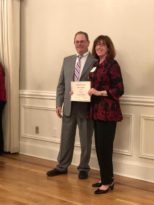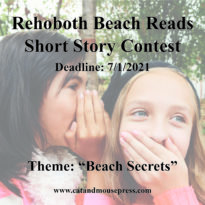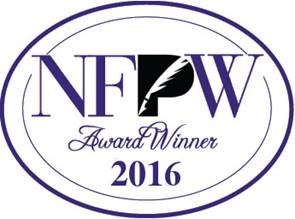Writing Your Short Story or Novel to a Niche Audience
 A niche is a small space, a cubbyhole. It doesn’t sound appealing, but it can provide a path to publication, especially for beginning writers.
A niche is a small space, a cubbyhole. It doesn’t sound appealing, but it can provide a path to publication, especially for beginning writers.
In marketing, a niche is a specialized group of customers. Think how much easier it would be to market a product to female dog owners between the ages of 60 and 80 who live in Wilmington, Delaware, than to market to everyone. You can skip national advertising and focus on Wilmington area newspapers (targeting the geography and age—older people tend to read newspapers), women’s magazines (targeting the sex), and posters in pet shops (targeting the interest).
For writers wanting to publish, one of the most difficult challenges is getting the attention of an agent or publisher. How does one stand out from the thousands of competing manuscripts? Well, one way is to find a niche. A niche is as appealing to publishers as it is to any other marketing entity. And now, more than ever, marketing is key to getting published. Even if you plan to self-publish—in fact, especially if you do—marketing is an essential consideration. You can write a general fiction book, but unless you target a niche, you will find it extremely difficult to get noticed by the world at large.
There are a variety of different kinds of niches available to writers. These include:
- Geographic (Rehoboth Beach Reads)
- Interest group (pet owners, LGBT, parents of disabled children)
- Genre (steampunk, historical romance)
- Reader Age (toddler, young adult)
- Style of writing (graphic novel, haiku)
Ideally, the niche you choose connects with an area of expertise or strong interest, or at the very least a topic you are willing to research extensively. A good niche is one that has an identifiable audience and a way of reaching that audience.
For nonfiction, finding a niche is relatively easy. Do some research within your area of expertise/interest and find out what’s already been done. A great combination is a topic that has been covered a little (so you know there is interest) but has not been overdone. Even the most experienced writers are careful not to address subjects that have already been extensively covered. Take Erik Larson, bestselling author of Devil in the White City, In the Garden of Beasts, and Isaac’s Storm, among other books. When it came to writing a book about an iconic ship sinking, did he write about the Titanic? No. The Titanic has been the subject of dozens of books, hundreds of articles, and a blockbuster movie. But what about the Lusitania? It had many of the same elements in terms of its story, yet had not been given as much exposure. Instead, Larson chose the Lusitania and wrote Dead Wake, a fascinating book.
When looking for a nonfiction niche, look (within your area of expertise or interest) for a topic that is interesting but hasn’t been overdone and that has a built-in audience that is easy to target. It also helps if the author is active in organizations, online groups, and other places where the target audience congregates.
For fiction, you can take the story you planned to write and set it in a specific place (geographic targeting) or incorporate an issue or theme with specialized appeal. This does not mean that you write a Western and then set it in Orlando, Florida (unless you’re going for humor), or that you turn a wonderful story about friendship into a lecture about animal rights.
Writing to a niche means consciously considering marketing, but not destroying your writing for the sake of marketing. In fact, you may already have a niche audience for a story or book you’ve written. Rachel Simon wrote a lovely memoir, Riding the Bus with My Sister, about the time she spent with her sister, Beth, who has a developmental disability. The bestselling book (which was made into a movie) connected especially well with people who have disabled family members and those who work with the disabled. Simon now speaks to groups across the country. It may not have been intentional, but that niche audience helped boost the book’s marketability.
A niche can help you identify outlets for your book or story as well. For example, a book geared toward toddlers might also be sold through toy stores, children’s clothing stores, or candy shops. You could do book signings at daycare centers or children’s theater performances. A historical novel might be sold in a historical society gift shop, through a historical organization, or at living history events.
A niche can also help you market a short story, as many magazines and anthologies have a theme (often one that targets a niche). For example, Delaware Beach Life is a regional publication (geographic niche) that often publishes short stories that have a regional connection. Target that niche and you have a chance of having your story selected. Submit a story about dog-sledding in Alaska, and your chances are zero.
If you plan to self-publish a collection of your own short stories, you may want to consider a theme. Readers like stories that have a connection, whether that connection is a character, setting, style, or subject matter. Targeting a niche gives you a thread to tie the stories together and a marketing advantage.









